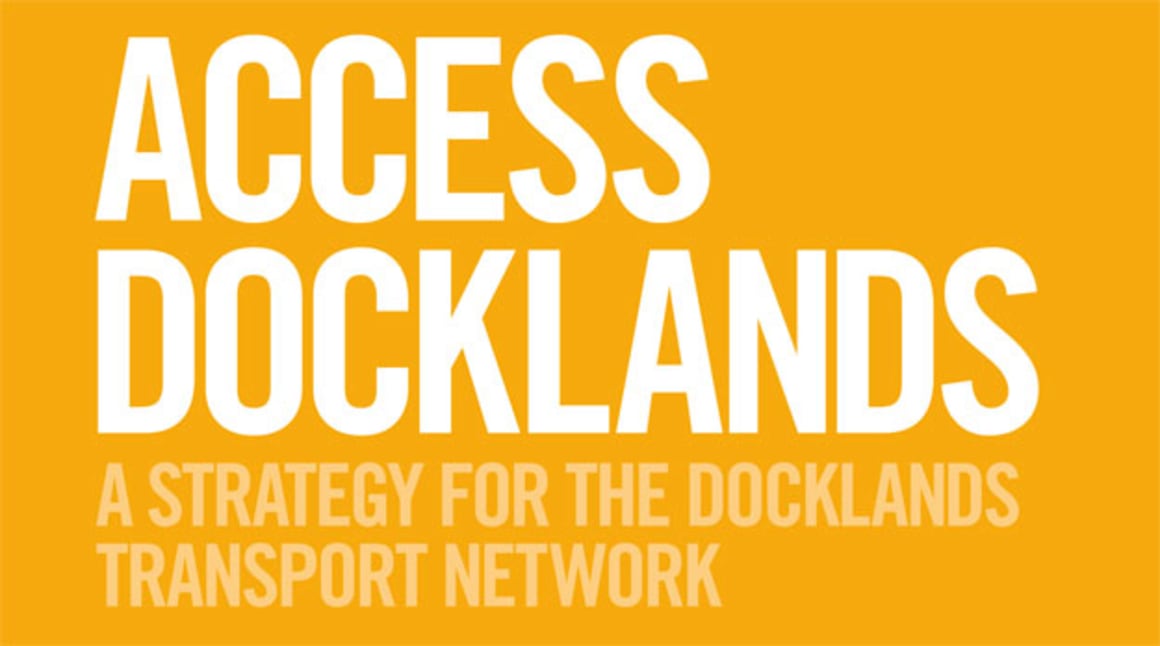The Access Docklands transport strategy

Forum member Fedsquared recently created a thread in the UM forum linking directly to the "'Access Docklands' - A Strategy for the Docklands Transport Network" document - it warrants much more exposure and discussion. The strategy was devised by Places Victoria and the City of Melbourne in collaboration with UrbanTrans ANZ and the original document can be viewed here.
Cutting right to the chase, the strategy provides a long-term view of the individual projects required to position Docklands as another corridor for north-south movement through Central Melbourne. Key projects which tie in with the long-term E-Gate redevelopment area include a new road and tram line connecting North Melbourne Station with Footscray Road and several bridges across the Yarra and a new bridge at the opening to Victoria Harbour immediately East of the Bolte Bridge.
Context of the strategy: 2012-2040 growth predictions for both residents and workers (Page 27).
Although a major focus for redevelopment for this decade, over time Docklands will look noticeably small once Fishermans Bend, E-Gate and the Arden-Macaulay precincts start turning the first sod of soil. In saying that however, Docklands, like the CBD, is at the centre of the entire region which will be redeveloped over the next 3-4 decades and the report is very strong on developing the transport infrastructure - walking, cycling, public and private transport - in Docklands to support north-south movements across the river and Victoria Harbour.
We get a glimpse of what's to come with regards to bridges across the Yarra in the walking and cycling transport infrastructure concept plans (Page 47)
The new bridges across the Yarra - Collins Street extension starting immediately west of the ANZ HQ, the extension of Bourke Street and at the end of the Victoria Harbour peninsula immediately east of the Bolte Bridge - all have one thing in common: they must cater for marina and large vessel traffic using the waterway. The report states that Docklands residents, businesses and developers were consulted as part of the Access Docklands process, however there is little detail on how these bridges will work and one would assume boat owners and the developers building the marinas would have stated their access must remain.
The new Collins Street extension bridge is mooted to carry trams from Collins Street and into Fishermans Bend, and I'm looking forward to seeing a more detailed concept design. As mentioned, the design will need to include an opening mechanism so maritime traffic can make their way up / down river and interesting questions will need to be answered with the regards to the level of service a tram or bus route on the bridge. Sure, the bridge opening could be timetabled just like a tram can be, however this reduces the flexibility to run as many trams as possible through to Fishermans Bend.
I like out of the box thinking, and there's a great snippet on Page 48 about the procurement and operation of dedicated bus services, potentially utilising existing tram rights of way, to start operating Docklands - CBD connections. For instance, Access Docklands provides scope for greater utilisation of Flagstaff as an interchange with Docklands - dedicated short route and high frequency bus routes could run down La Trobe street with a terminus at the curb on The William & La Trobe street intersection.
Indulging for a moment, the La Trobe street and William Street intersection could be reconfigured to allow shorter buses to perform a U-bolt from the northern curb of La Trobe street to the southern curb of La Trobe street utilising the space in the middle of the intersection. Perhaps a 2 minute timer where all traffic - tram and car - is stopped and buses waiting at the northern curb are given the highest priority to turn 180 degrees to go back West along La Trobe street. From the southern curb outside Flagstaff station's entry, buses can move onto the westbound tram track and run on the tram lines all the way down La Trobe street and turn left to go south down Harbour Esplanade to Collins Street and then use the new tram/bus bridge through to Yarra's Edge and Fishermans Bend. No need to widen roads for bus lanes in this case.
In the above map we get a clear picture of Places Victoria & City of Melbourne's thinking with regards to new public transport infrastructure in the area. One concept that ties directly into the redevelopment of E-Gate and eventually the Arden-Macaulay area is the new tram route utilising the current track on Harbour Esplanade and Footscray route and building a new road and tram extension across the current Melbourne yard. Access Docklands lists this as a medium term goal and given any road connecting to North Melbourne Station will be need to be elevated to connect with Abbotsford or Dryburgh Street (the rail lines are below street level), the structure to connect Footscray Road and North Melbourne Station would need to be elevated for near on its entire length to traverse the still used Melbourne yard.
The objective is to make yet another interchange for Docklands in the short-medium term - North Melbourne Station. The current Melbourne yard is a barrier and the lack of any link, when rectified, might go a long way to stimulate the northern end of MAB's Newquay and drive visitors back into the Waterfront City precinct.
So it's over to you, what are the positives and negatives that stand out from the strategy? What do you think of the short-term goal of implementing more bus routes before larger more capital intensive tram projects come along? What's missing?
Let the discussion begin.